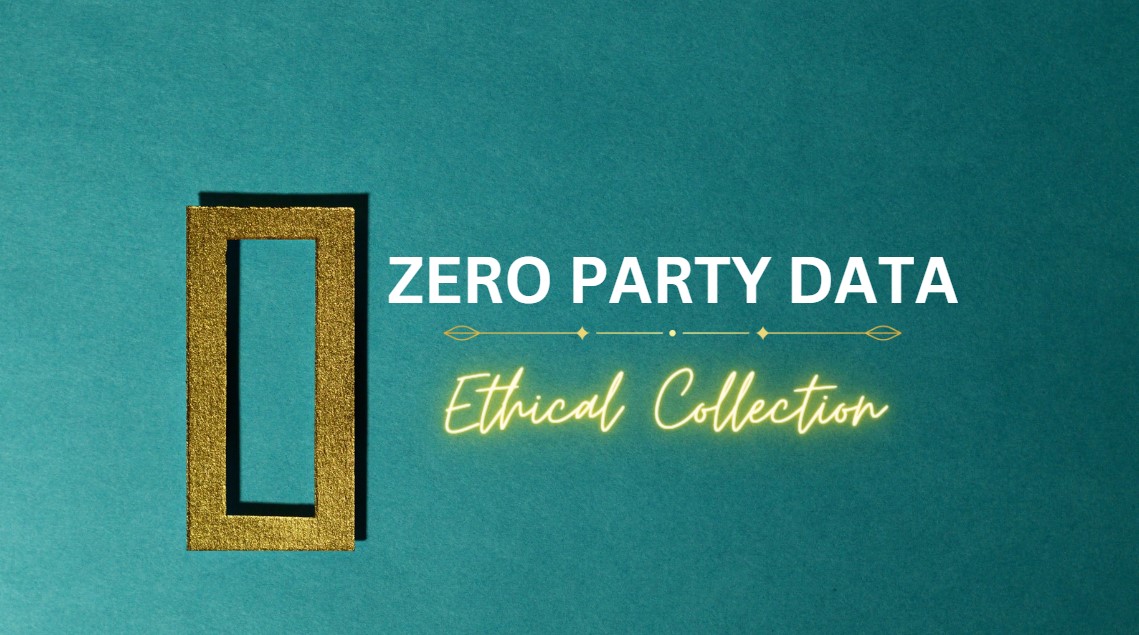Tailoring content and offers to individual preferences and needs can significantly boost conversion rates and customer loyalty. To achieve this level of personalization, businesses often rely on data collection. However, the ethical implications of data gathering have become increasingly important to consider. This is where “zero-party data” comes into play — a valuable resource that empowers marketers to provide personalized experiences while maintaining the highest ethical standards.
In this blog post, we will explore what zero-party data is, how it can be collected ethically, and provide practical examples of its implementation.
Understanding Zero-Party Data
Zero-party data is the information that consumers willingly and proactively share with businesses about their preferences, interests, and intentions. Unlike first-party data, which is collected implicitly through user interactions with a website or app, zero-party data is explicitly provided by the users themselves. This data is willingly shared through surveys, feedback forms, preference centers, and other direct communication channels.
Ethical Collection of Zero-Party Data
The ethical collection of zero-party data is of paramount importance to build trust and maintain a positive relationship with your customers. Here are some guidelines to ensure ethical practices:
Transparency and Consent
Always be transparent about the data you are collecting and how it will be used. Obtain explicit consent from users before gathering any information. Clearly state the benefits of sharing data, such as improved personalization and tailored offers.
Offer Value in Exchange
Provide tangible benefits or rewards to users who share their preferences. This could be in the form of exclusive discounts, personalized content, or access to limited-time offers. Users are more likely to share data if they perceive value in doing so.
Data Security and Privacy
Implement robust security measures to safeguard the collected data. Comply with relevant data protection regulations such as GDPR or CCPA. Assure users that their data is safe and will not be shared with third parties without their consent.
Opt-Out Option
Give users the freedom to withdraw their consent and delete their data at any time. Respecting user choices and providing an easy opt-out process builds trust and credibility.
Examples of Zero-Party Data Collection
Allow users to set their preferences and interests through dedicated preference centers. Clothing retailers can use this data to personalize product recommendations based on customers’ preferred styles, colors, and sizes.
Interactive Quizzes and Surveys
Create fun and engaging quizzes or surveys that provide value to users while collecting valuable data. A travel agency can offer a “Dream Vacation Quiz” where users answer questions about their ideal vacation, helping the agency tailor future travel deals accordingly.
Feedback Forms
Invite users to share their feedback and suggestions directly. An electronics manufacturer could use this feedback to enhance their product features or design, catering to customers’ specific needs.
Subscription Customization
For subscription-based services, offer customization options. A streaming platform could allow users to select their favorite genres or actors, leading to personalized content recommendations.
Utilizing Zero-Party Data for Personalization
Once you have collected zero-party data ethically, the next step is to leverage it effectively for personalization:
Tailored Content
Use zero-party data to create personalized content that aligns with users’ interests and preferences. This could be in the form of blog articles, product recommendations, or email newsletters.
Personalized Offers and Discounts
Segment your audience based on their preferences and send targeted offers and discounts. An online bookstore could send book recommendations based on users’ favorite genres or authors.
Enhanced User Experience
Leverage zero-party data to improve the user experience on your website or app. Personalize the user interface, navigation, and calls-to-action based on user preferences.
Email Marketing Personalization
Craft personalized email campaigns that resonate with individual recipients. Use zero-party data to address users by their names and tailor the email content to their preferences.
Final Word
Remember, ethical data collection and usage are not just about compliance; they are fundamental to earning customer trust and loyalty, which are invaluable assets in today’s competitive digital landscape.

